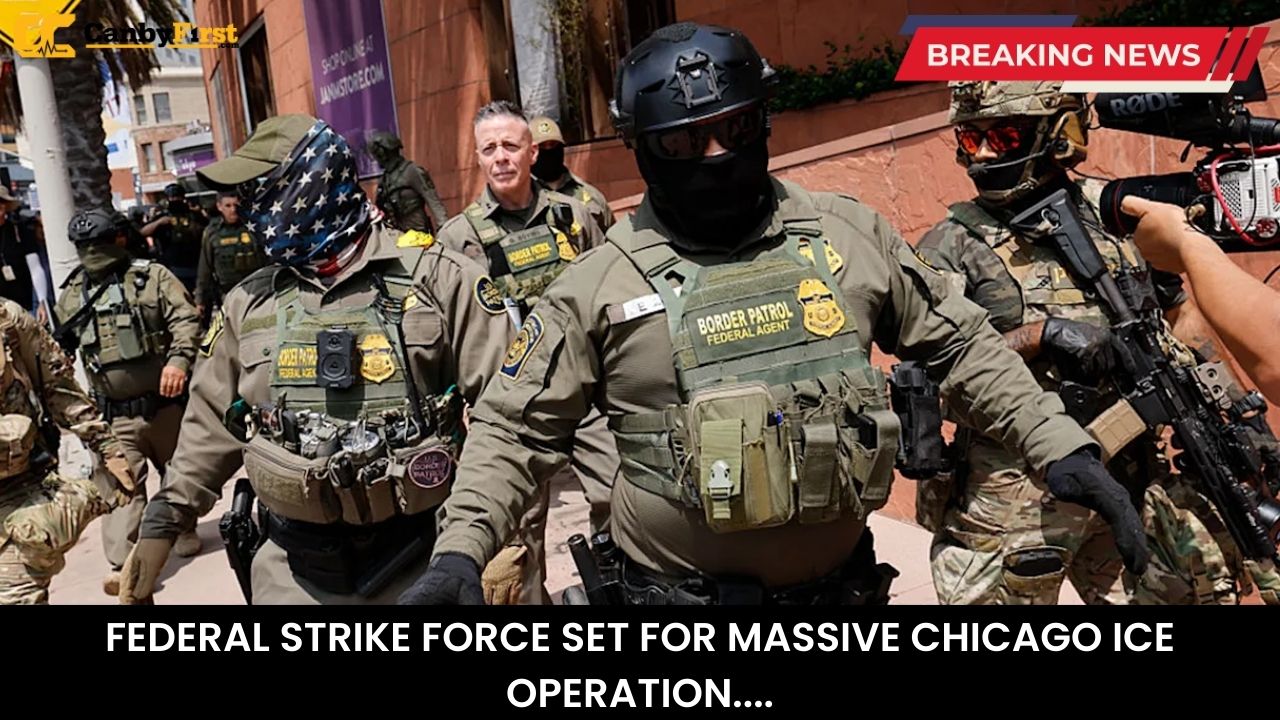Chicago, US: A major federal immigration enforcement operation is preparing to launch in Chicago as early as next week, with hundreds of Department of Homeland Security officials set to deploy in what could become one of the largest ICE crackdowns in the city’s recent history.
Naval Base To Serve As Strategic Hub
The Trump administration has requested access to Naval Station Great Lakes, located approximately 35 miles north of Chicago, to house federal agents and serve as a staging ground for the operation. According to internal communications from Navy Captain Stephen Yargosz, the commanding officer of the base, DHS, ICE, and Customs and Border Protection agents would be stationed at the facility from September 2-30.
The naval installation would provide “facilities, infrastructure, and other logistical needs” for what sources describe as a “large contingent” of federal personnel. The operation mirrors similar tactics deployed in Los Angeles earlier this year, where ICE utilized armored vehicles and tactical gear, sparking widespread protests and civil unrest.
Also Read
Operational Timeline and Scale
Border Czar Tom Homan confirmed Thursday that discussions are underway about utilizing the Chicago-area naval base for immigration enforcement operations. “You can see a ramp-up of operations in Chicago, absolutely,” Homan told reporters outside the White House, though he declined to specify the exact number of personnel involved, stating only that “it will be a large contingent.”
The operation is expected to commence around September 5th, immediately following Labor Day weekend. Federal authorities are reportedly preparing to deploy armored vehicles to the city in the coming days, with an increased presence of federal agents anticipated by next Friday.
Multi-Agency Federal Response
The Chicago operation represents a coordinated effort involving multiple federal agencies. ICE will work alongside Customs and Border Protection, with potential support from National Guard units if deemed necessary for peacekeeping purposes. This multi-agency approach reflects the administration’s strategy of mobilizing “the entire government” for immigration enforcement, according to Homan.
The operation is part of President Trump’s broader nationwide immigration crackdown, which has already seen significant enforcement actions in cities like Los Angeles and Washington D.C. In Los Angeles, the administration deployed 4,000 National Guard troops and 700 Marines to manage protests, with between 250-300 guard troops remaining activated through November.
Local Opposition Mounts
Chicago Mayor Brandon Johnson has expressed strong opposition to the planned federal intervention. “This strategy appears to replicate their approach in Los Angeles, where ICE agents were employed as a justification for escalating federal and National Guard presence,” Johnson stated. The mayor emphasized that the city would work to “ensure that Chicagoans are aware of their rights” and assist families in understanding their options in case of detention.
Illinois Governor JB Pritzker has been equally vocal in his resistance, stating he has received “no calls from the White House, from the federal government, from anybody who might be in charge of some sort of troop movement.” Pritzker warned Trump against sending National Guard troops to Chicago, declaring, “Mr. President, do not come to Chicago. You are neither welcomed nor needed here.”
Constitutional and Legal Concerns
State and local officials are exploring legal challenges to any federal deployment. Illinois Attorney General Kwame Raoul indicated that for the president to federalize the National Guard, “there either has to be a foreign invasion, rebellion from within or inability to enforce a federal law because of inadequate resources through regular means.” Raoul contends that “none of those circumstances exist in regards to dealing with crime in Chicago.”
Senator Dick Durbin condemned the reported plans, stating that using Naval Station Great Lakes “would be both unhelpful and illegal.” Durbin emphasized that state and local leaders “have not asked for or consented to President Trump bringing in the military to ‘save’ our city.”
Chicago’s Sanctuary City Status
Chicago’s designation as a sanctuary city has made it a frequent target of Trump administration criticism. The city maintains policies that limit cooperation between local law enforcement and federal immigration officials, arguing that such collaboration could undermine community policing efforts and discourage immigrant communities from seeking help or cooperating with local authorities.
Police Superintendent Larry Snelling has confirmed that Chicago officers will not assist ICE agents during enforcement operations, nor will they inquire about immigration status when dealing with crime victims or individuals seeking help.
Crime Statistics Dispute
The planned operation comes amid a dispute over Chicago’s crime statistics. Trump has repeatedly characterized Chicago as a “mess” where residents are “screaming for us to come,” while local officials counter with data showing significant improvements. Mayor Johnson has cited a 21.6% overall crime reduction year-to-date, with homicides falling by 32.3%. FBI data indicates Chicago is not among the top 25 most dangerous cities in the United States.
National Deportation Goals
The Chicago operation is part of Trump’s pledge to execute the “largest deportation operation” in U.S. history, with a goal of deporting one million people annually. ICE has reportedly been instructed to achieve quotas of 75 arrests per day across field offices, potentially exceeding daily arrest numbers from the previous year.
Recent nationwide enforcement actions have already demonstrated the administration’s aggressive approach. On a single Sunday in January, federal agencies arrested nearly 1,000 individuals across multiple cities, marking the highest daily total since ICE began sharing such statistics.
As Chicago prepares for what could be an unprecedented federal immigration enforcement action, the operation highlights the ongoing tension between the Trump administration’s immigration agenda and Democratic-led cities that have adopted sanctuary policies. The coming weeks will test both the administration’s enforcement capabilities and local officials’ ability to protect their communities while navigating federal intervention.
The operation’s launch remains subject to final approval from Defense Secretary Pete Hegseth for the use of military facilities, though sources indicate planning is well advanced and implementation appears imminent.












